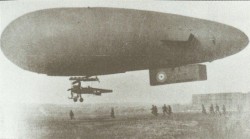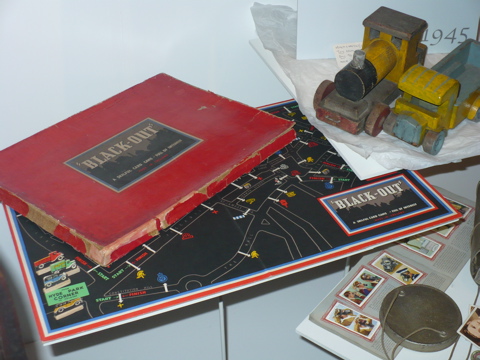In a discussion of the activities of MI5’s Port Control section during the First World War, Christopher Andrew mentions German musings about using biological weapons against British civilians:
The most novel as well as the most sinister form of wartime sabotage attempted by Sektion P was biological warfare. At least one of its scientists in 1916 devised a scheme to start a plague epidemic in Britain, either by infecting rats or, more improbably, by dropping plague bacilli cultures from Zeppelins over ports. The Prusso-German General Staff, however, vetoed bacteriological warfare against humans as totally contrary to international law (the Hague Laws of Warfare).1
But he doesn’t provide any references. Is this plausible?
The British War Cabinet considered ‘The possible Spread of Epidemics by dropping Germs from the Air’ during its meeting on 9 February 1917.2 It accepted the advice from experts from the Royal Society, the Army Medical Service and the Local Government Board that the possibility was remote, and that any outbreak would be easily contained. Consequently Cabinet decided that ‘no further action was required’. The expert reports themselves are quite interesting. That from Dr Arthur Newsholme, the chief medical officer of the Local Government Board, notes press reports of ‘poisoned sweets and garlic saturated with garlic being stated to have been dropped at Constanza [Romania] from enemy aeroplanes’. Closer to home, the Board itself received a letter claiming that ‘according to information “from a reliable source,” infected sweetmeats had been dropped over Sheffield’.3 But, Newsholme added, no evidence had been produced in either case.
None of this relates to bubonic plague, however. And in Martin Hugh-Jones’s summary of known (that is, by the British) wartime German biological warfare plans, plague is not mentioned.4 Most of the actual biological warfare activity by Germany during the First World War was directed towards anthrax and glanders, for use against horses, sheep and cattle. Nor does Hugh-Jones know of German wartime proposals to spread disease from the air (as opposed to proposals after the war, which is the focus of his article).
But bubonic plague can be weaponised and deployed from the air. Japan’s Unit 731 proved that in China in 1940 and 1941, not only in controlled experiments but in field trials. And by field trials I mean, of course, bombing civilian areas with bubonic plague. There were at least four separate attacks, involving at most a handful of Japanese aircraft: Chuhsien, 4 October 1940; Ningpo, 27 October 1940; Kinhwa, 28 November 1940; and Changteh, 4 November 1941. The plague was not dropped in bombs but usually by way of fleas and grain; in two cases plague bacilli were detected by local hospitals. Only in Kinhwa did no outbreak of plague follow; a hundred people died in Ningpo alone.5
So it does seem possible that German scientists considered using Zeppelins to rain black death upon Britain, and that it may even have worked. The British experts may have underestimated the potential of this form of aerial attack; and the psychological impact might have been far greater than the medical one. Then again, the great influenza pandemic in 1918 didn’t disrupt the war to any great extent, and it killed far more people than any plague would have done. So the War Cabinet’s lack of concern was justified, in the non-event.
![]() This work is licensed under a Creative Commons Attribution-NonCommercial-NoDerivatives 4.0 International License.
Permissions beyond the scope of this license may be available at http://airminded.org/copyright/.
This work is licensed under a Creative Commons Attribution-NonCommercial-NoDerivatives 4.0 International License.
Permissions beyond the scope of this license may be available at http://airminded.org/copyright/.
- Christopher Andrew, The Defence of the Realm: The Authorized History of MI5 (London: Allen Lane, 2009), 78. [↩]
- Minutes, War Cabinet meeting 59, 9 February 1917, CAB 23/1. See also the discussion in Marion Girard, A Strange and Formidable Weapon: British Responses to World War I Poison Gas (Lincoln and London: University of Nebraska Press, 2008), 84-6. [↩]
- Letter, A. Newsholme, Appendix II, War Cabinet meeting 59, 9 February 1917, CAB 23/1. For the Constanza incident, Newsholme cites the News Chronicle and The Times, both of 13 October 1916. I can’t find the latter article, but there is something similar in The Times, 27 October 1916, 9. [↩]
- Martin Hugh-Jones, ‘Wickham Steed and German biological warfare research’, Intelligence and National Security 7 (1992), 381-3. [↩]
- Ed Regis, The Biology of Doom: The History of America’s Secret Germ Warfare Project (New York: Owl Books, 2000), 17-9. [↩]




I would think that a bubonic plague attack would have more psychological effect than anything, because – as I understand it, anyway – despite its fearsome reputation, it’s not actually all that communicable a disease.
As easy as it is to say that ‘i’m sure I read somewhere’ with no real back up, i’m sure I read somewhere that British civilians were issued with gas masks in the First World War, or perhaps just in the London area, so possibly there was a fear of poison gas being used against civilians in attack from the air in the Great War?
Alan:
Yes, that’s my understanding too. Cases still pop up from time to time (according to Wikipedia there was one in Oregon last year) but its epidemic potential is low. So how much propaganda value it would have had would depend on how effectively the British authorities controlled the news and rumours of the attacks.
Rob:
You may have read it here :) Though gas masks weren’t issued to civilians, there were police warnings of possible gas attacks on London via Zeppelin. Overall I wouldn’t say it was a major concern, however; at least it doesn’t show up frequently in the sources I’ve looked at.
Pingback: Burn or blight | Airminded